 Kia Rio: Air bag collision sensors
Kia Rio: Air bag collision sensors
(1) SRS control module
(2) Front impact sensor
(3) Side impact sensor
WARNING - Air bag sensors
- Do not hit or allow any objects to impact the locations where air bag or sensors are installed. This may cause unexpected air bag deployment, which could result in serious personal injury or death.
- If the installation location or angle of the sensors is altered in any way, the air bags may deploy when they should not or they may not deploy when they should. Therefore, do not try to perform maintenance on or around the air bag sensors. Have the vehicle checked and repaired by an authorized Kia dealer.
Problems may arise if the sensor installation angles are changed due to the deformation of the front bumper, body or B pillar where side collision sensors are installed. Have the vehicle checked and repaired by an authorized Kia dealer.
Installing aftermarket bumper guards or replacing a bumper with non-genuine parts may adversely affect your vehicleŌĆÖs collision and air bag deployment performance.
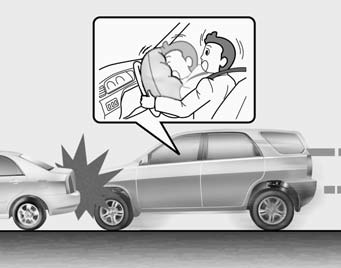
Air bag inflation conditions
Front air bags
Front air bags are designed to inflate in a frontal collision depending on the intensity, speed or angles of impact of the front collision.
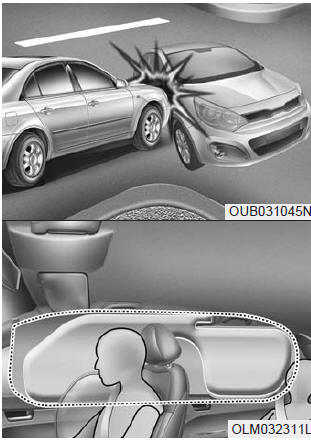
Side air bags
Side air bags (side impact and/or curtain air bags) are designed to inflate when an impact is detected by side collision sensors depending on the strength, speed or angles of impact resulting from a side impact collision.
Although the front air bags (driverŌĆÖs and front passengerŌĆÖs air bags) are designed to inflate in frontal collisions, they also may inflate in other types of collisions if the front impact sensors detect a sufficient frontal force in another type of impact.
Side impact and curtain air bags are designed to inflate in certain side impact collisions. They may inflate in other type of collisions where a side force is detected by the sensors.
If the vehicle chassis is impacted by bumps or objects on unimproved roads or sidewalks, air bags may deploy. Drive carefully on unimproved roads or on surfaces not designed for vehicle traffic to prevent unintended air bag deployment.
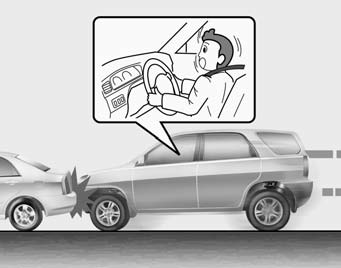
Air bag non-inflation conditions
In certain low-speed collisions the air bags may not deploy. The air bags are designed not to deploy in such cases because they may not provide benefits beyond the protection of the seat belts in such collisions.
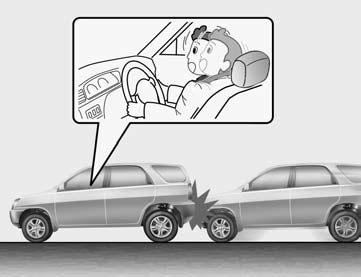
Air bags are not designed to inflate in rear collisions, because occupants are moved backward by the force of the impact. In this case, inflated air bags would not be able to provide any additional benefit.
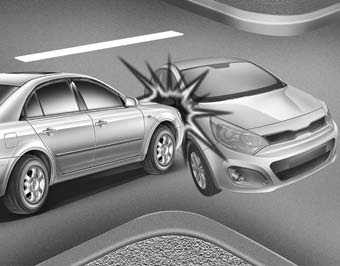
Front air bags may not inflate in side impact collisions, because occupants move to the direction of the collision, and thus in side impacts, front air bag deployment would not provide additional occupant protection.
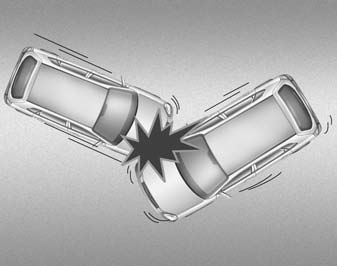
In a slant or angled collision, the force of impact may direct the occupants in a direction where the air bags would not be able to provide any additional benefit, and thus the sensors may not deploy any air bags.
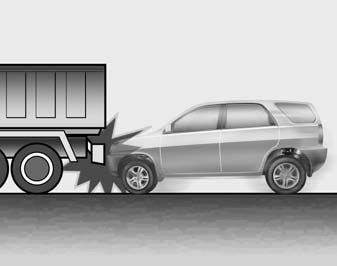
Just before impact, drivers often brake heavily. Such heavy braking lowers the front portion of the vehicle causing it to ŌĆ£rideŌĆØ under a vehicle with a higher ground clearance.
Air bags may not inflate in this "under-ride" situation because deceleration forces that are detected by sensors may be significantly replaced by such ŌĆ£under-rideŌĆØ collisions.
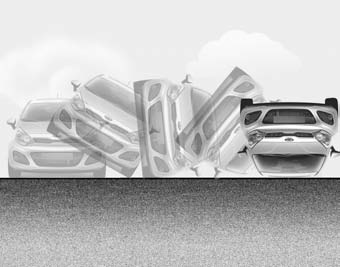
Air bags does not inflate in most rollover accidents, even though the vehicle is equipped with side impact air bags and curtain air bags.
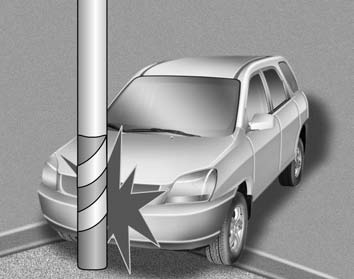
Air bags may not inflate if the vehicle collides with objects such as utility poles or trees, where the point of impact is concentrated to one area and the full force of the impact is not delivered to the sensors.
 Driver's and passenger's front air bag
Driver's and passenger's front air bag
Your vehicle is equipped with an Advanced Supplemental Restraint (Air Bag) System
and lap/shoulder belts at both the driver and passenger seating position.
The indications of the system's prese ...
 SRS Care
SRS Care
The SRS is virtually maintenancefree and there are no parts you can safely service
by yourself. If the SRS air bag warning light does not illuminate, or continuously
remains on, have your vehicle ...
See also:
Rear combination lamp Installation
Rear combination lamp (Inside)
[4 Door]
1.
Install the rear combination lamp assembly.
2.
Connect the rear combination connecto ...
Alternator: Specification
Items
Specification
ISG Alternator
Rated voltage
13.5V, 110A
Speed in use
1,000 ~ 18,000rpm
Voltage regulator
...
